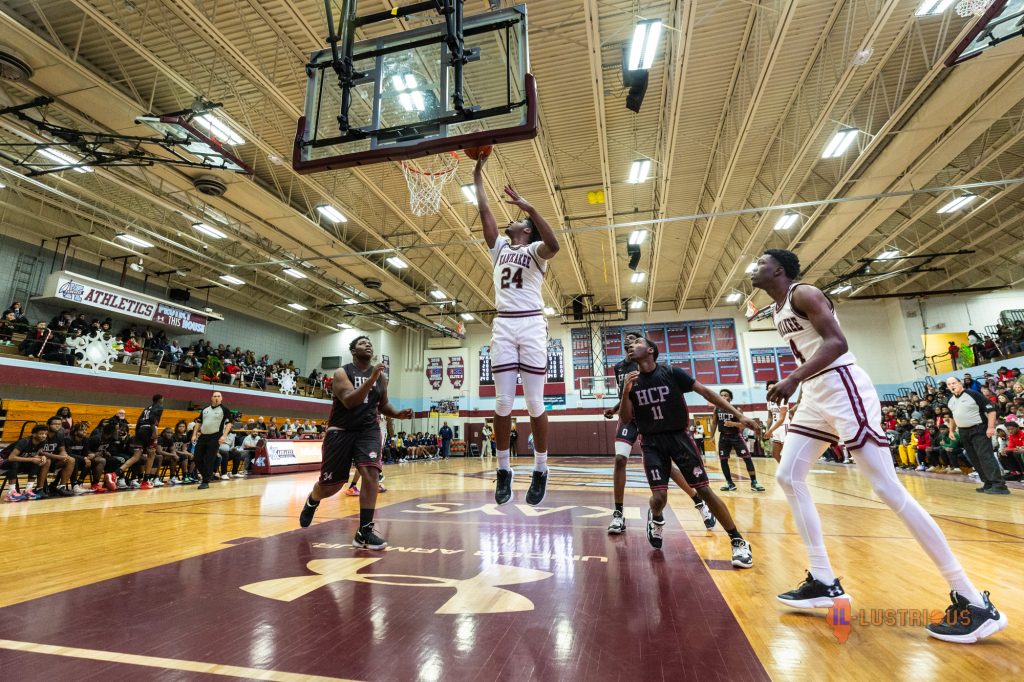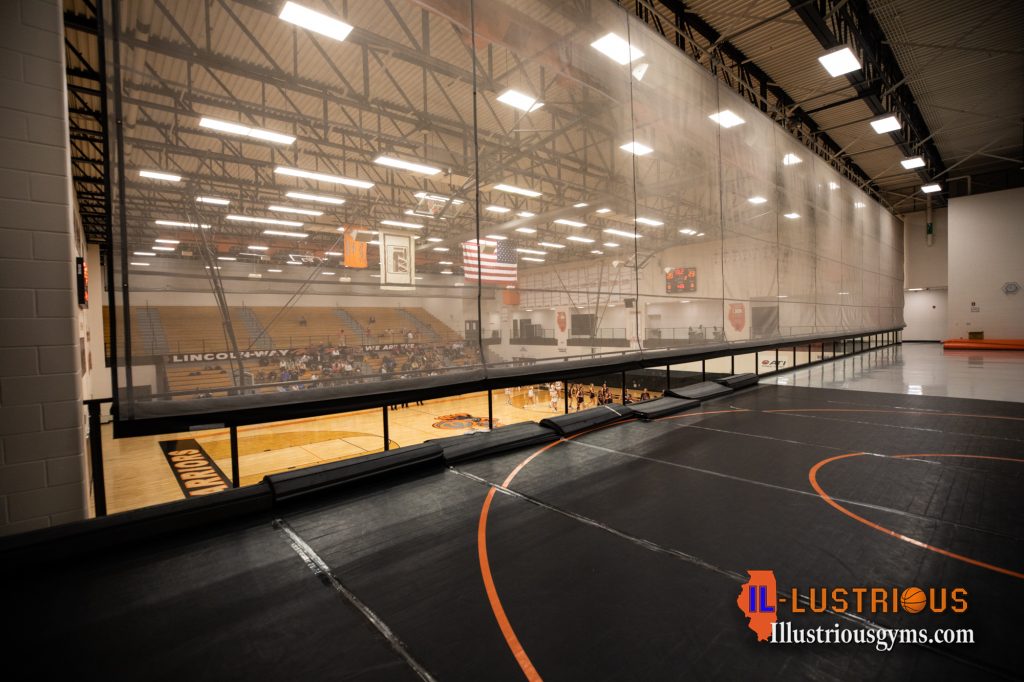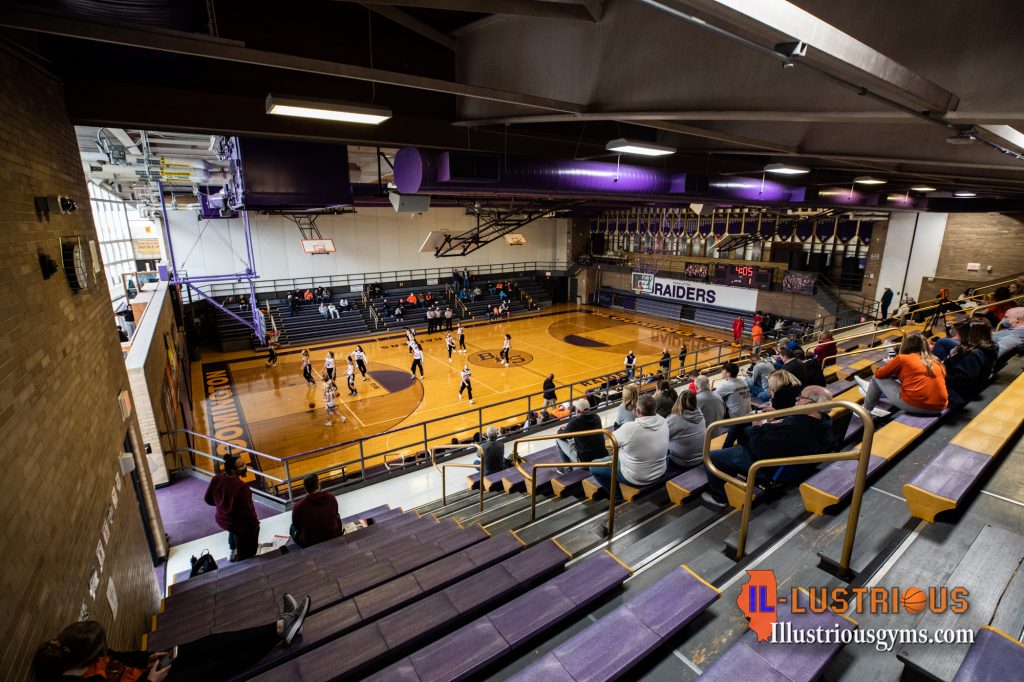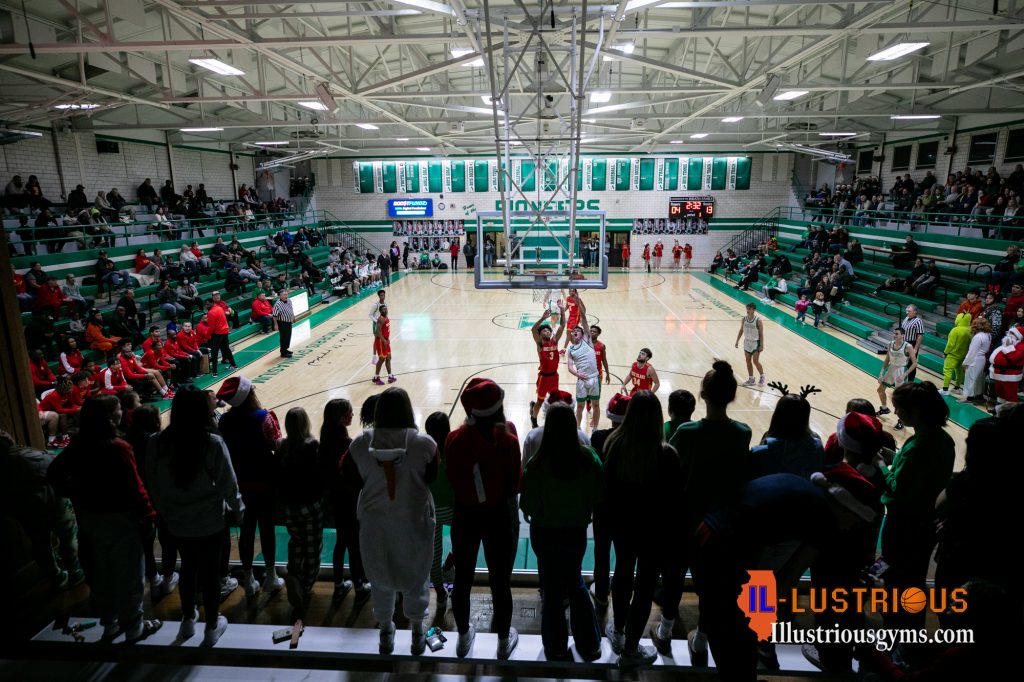The common two-tiered gym isn’t exactly as interesting as some of Illinois’ best high school gyms, but it’s s step up from most stale rectangles
If you’re having a hard time picturing what a two-tiered gym looks like, just think of a wedding cake that was flipped upside down. The smallest layer is the court floor and the larger layer is the upper-seating area.

Most two-tiered gyms have retractable bleachers on both levels and are separated by a height difference. Very rarely will the court-level bleachers be accessible from the upper tier.
The two tier system is a popular way to increase seating if your teams generally draw a larger crowd, but with the added bonus of being able to conduct multiple activities in the same gym at once. Gyms like Lincoln-Way West (below) have a drop screen that enables practices or secondary games to be played with little chance of stray balls interfering with the other games.

While technically a two-tiered gym, although it is so much more from a design perspective, Bloomington High’s Robert Frank Sports Complex has solid moving partitions separating it’s upper levels. While heavy and cumbersome, they offer a sound barrier for events going on while a game is in progress. At the State Farm Holiday Classic Tournament, they offer a great respite for coaches, refs, and members of the media to relax between games.

Some older two-tiered gyms like Alleman’s Don Morris gym in Rock Island, have permanent bleachers in their upper level. Built in 1949, this gym is also smaller than most of the two-tiered gyms out there.

While it would probably fill up a whole page in the book, there are numerous two-tiered gyms at high schools across the state. Several of which could have been featured in the book over another. Bradley-Bourbonouis has an almost identical look to Kankakee’s gym and if the schedules were reversed, they would have been in the book instead.




